blog
Interview with photographer Helen Jones
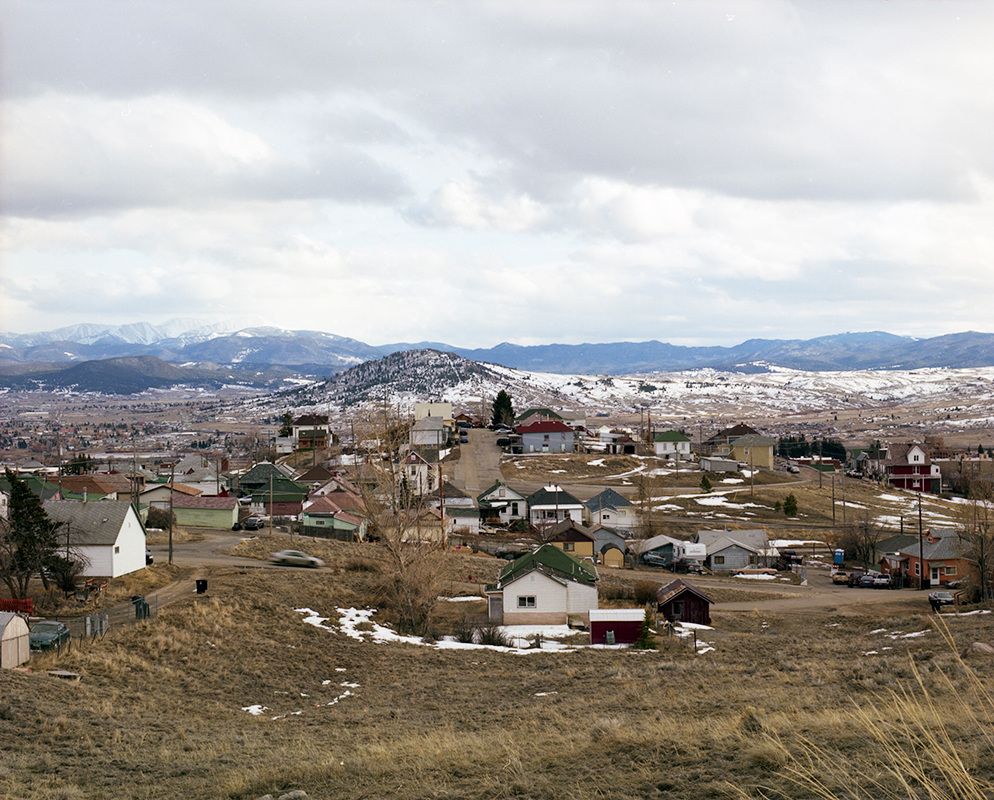
Butte, from Mining the Past
Cary Benbow (CB): Beyond the project statement you have on your website, would you please expand on the ideas behind ‘Mining the Past’, which is included in this month’s issue, and give an idea of how it relates to your larger body of work?
Helen Jones (HJ): ‘Mining the past’ is a project that came from a residency I did at the Imagine Butte Resource Center this past fall. I’d stopped briefly in Butte a couple times and was attracted to the aesthetic there. I‘d also toured through the Phoenix building, and knew I really wanted to photograph it more before it was cleaned up. In the project I tied together the artifacts I found in the Phoenix building with the land and history of land use in the area. I didn’t have to dig much; history is everywhere in Butte, and the Phoenix is filled with ephemera from decades past. I found old maps of the neighboring mining town of Anaconda, which led me to go photograph there. I sorted through the office of Ray Schilling, a partial owner of the building, and later found a letterpress plate of his portrait. I saw an exhibit about labor organizing in Butte that led me to search for Frank Little’s gravesite. The series is a resulting web of discoveries found during my time there.
Much of my larger body of work looks at places as palimpsests providing clues to the past, but its usually on a much smaller and more personal scale than this project.
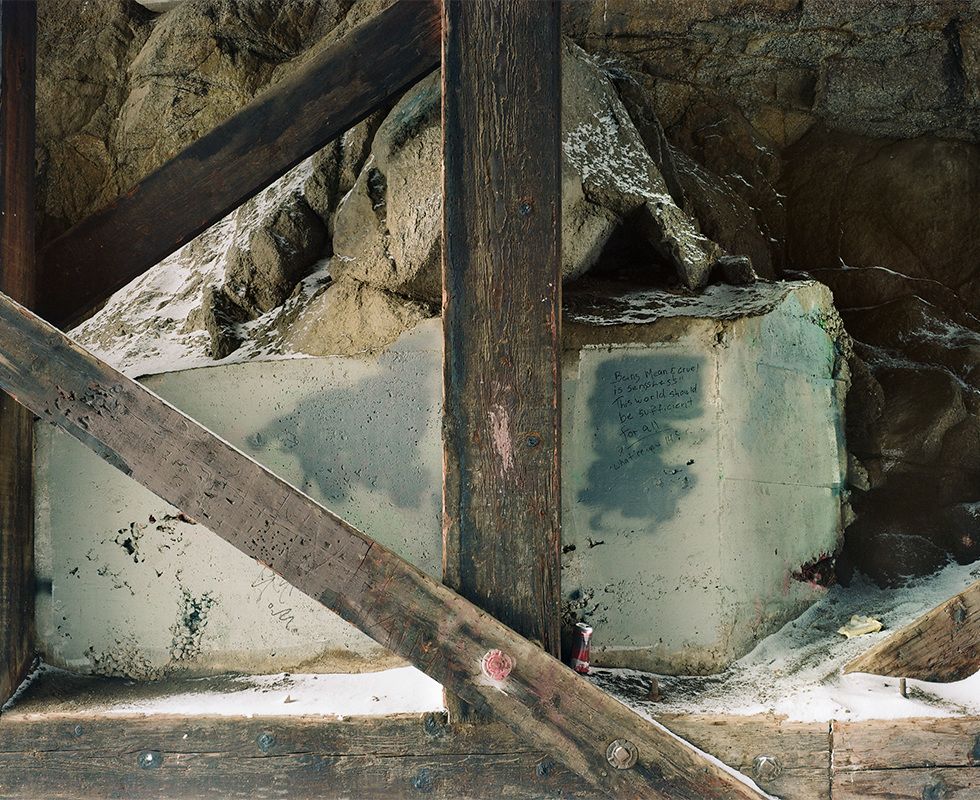
Being mean & cruel, from Mining the Past
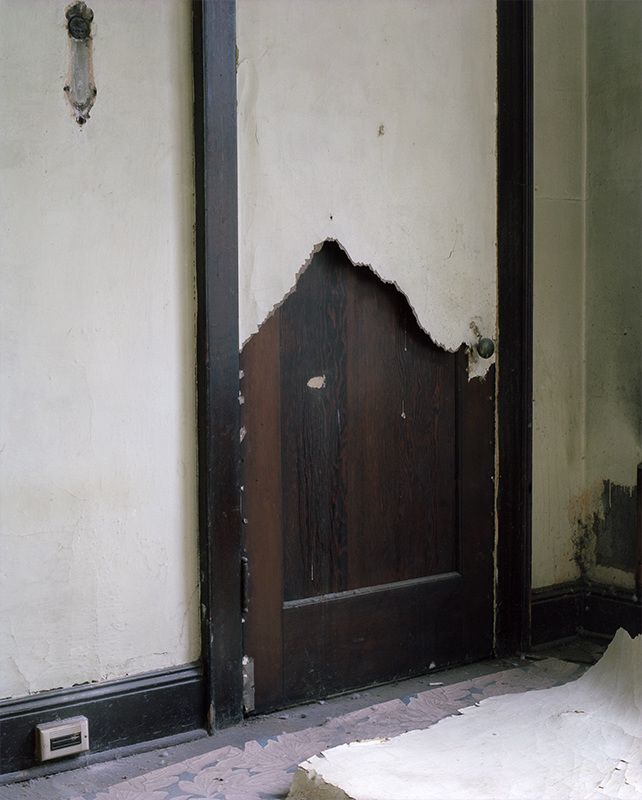
Door peak, from Mining the Past
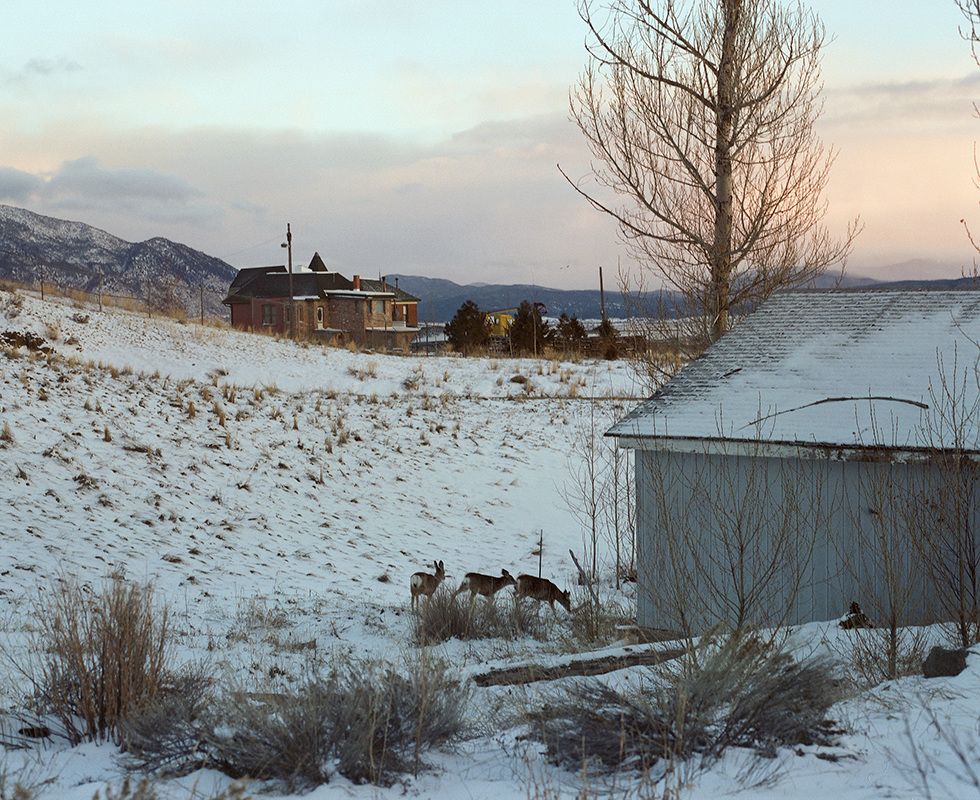
Deer, from Mining the Past
CB: In the broad sense, why do you photograph? What compels you to make the images you create?
HJ: It’s hard to say why I photograph. I often just feel like I have to – something looks too perfect and I feel it must be recorded. It could be the light, or an odd juxtaposition, or a beautiful landscape. Much of what I photograph is place-centric. I’m interested in the way people interact with spaces, both on a personal domestic level, and in a larger sense.
I started with photography when I was pretty young. My uncle is a photographer, so I was lucky to be exposed to it all my life. He always had a camera with him and we had a lot of his prints in my home. There is also an amazing youth photo program in my hometown of Brattleboro, Vermont called the In-Sight Photography Project, which provides classes to youth regardless of ability to pay. I took a lot of photo classes in high school, and had access to a darkroom both in school and outside of school. I felt like photography was a really good fit for me, and allowed me to record things around me; but it also spurred me to hunt for new places to photograph.
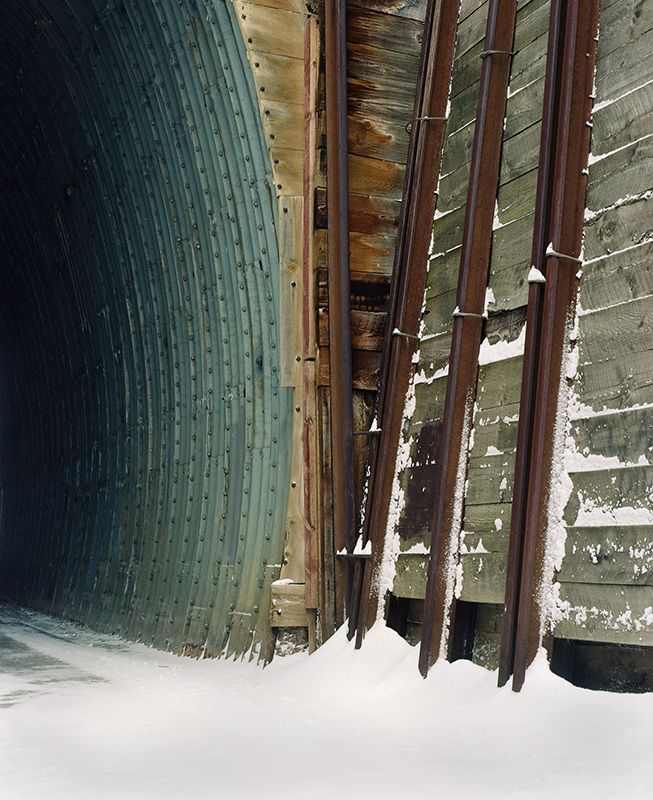
Snow tunnel, from Mining the Past
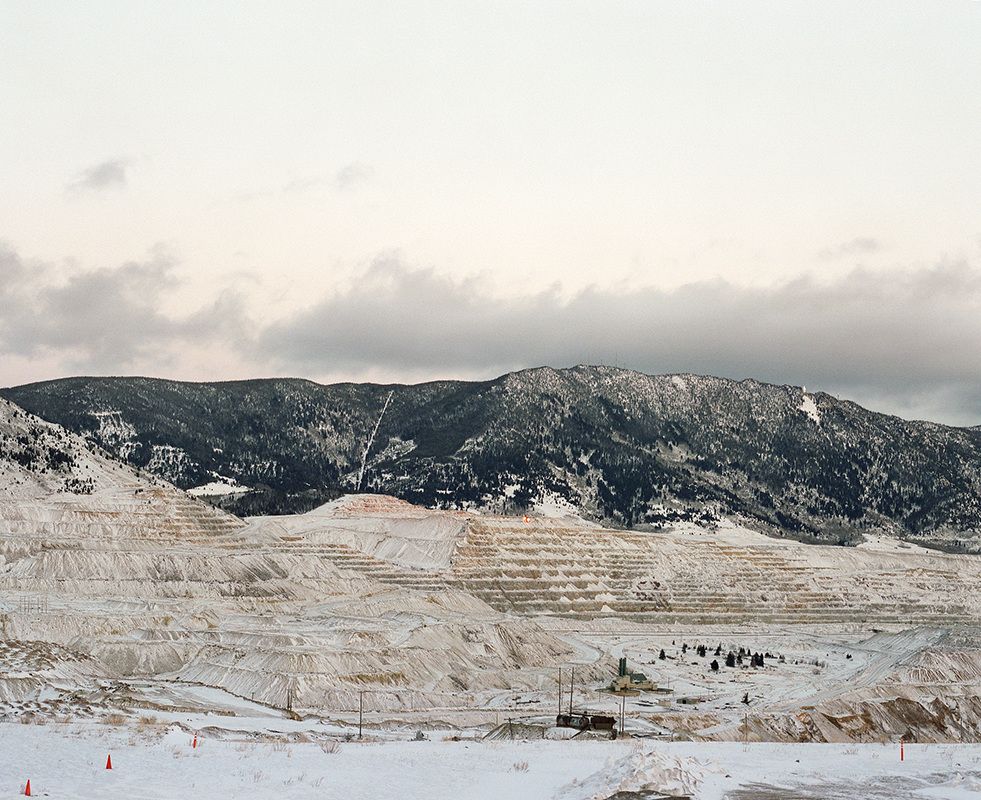
The pit, from Mining the Past
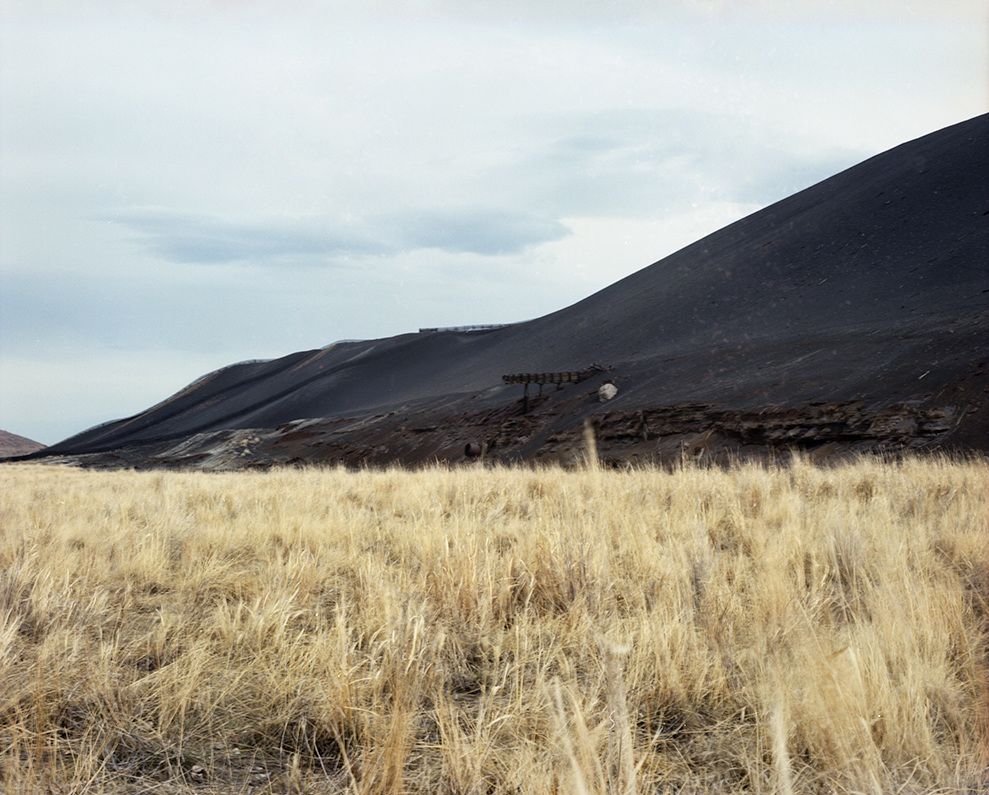
Slag pile, from Mining the Past
CB: There are elements of nature, wildlife, landscape, man’s inclusion/interaction with nature in your work – can you comment on why you choose to depict these elements in the way you do?
HJ: The land we live on shapes our lives in many ways but I think we can often lose sight of that, especially in cities. I am definitely drawn to scenes that highlight those connections. In Butte the town is built on the search for precious minerals; it is actually sitting atop mining tunnels, and was created with money from those endeavors. I guess I searched for scenes that would show how intertwined these things were.
CB: You also publish photo books with your work at Pine Island Press. Please talk about the role of a photographer as “publisher” and what you think about the recent increased push for photographers to publish photo books, or what led you to pursue publishing the work of others at a small press?
HJ: I love photo books. I have a growing collection and appreciate that such publications allow me to have a body of work from photographers I admire. Working in publications allows you to control the sequence and narrative of your work in a unique way. It is also cheaper and more accessible than collecting prints. That said there is something special and social about having a show, as an event, and going to a certain place to see a show you are interested in — I wouldn’t want to forsake that.
Pine Island Press was started at a picnic table one sunny afternoon in Portland. A few friends and I were talking about how expensive submission fees to shows were, and how we wanted to be more involved with the photographic community. We decided to make a zine and hoped to be able to create a new venue for folks to share their work free of charge. None of us knew much about publishing when we started the project; it led to a lot of new learning. Running Incandescent has also exposed me to a lot of new amazing photographers. I am seeing new work all the time, which is really inspiring.
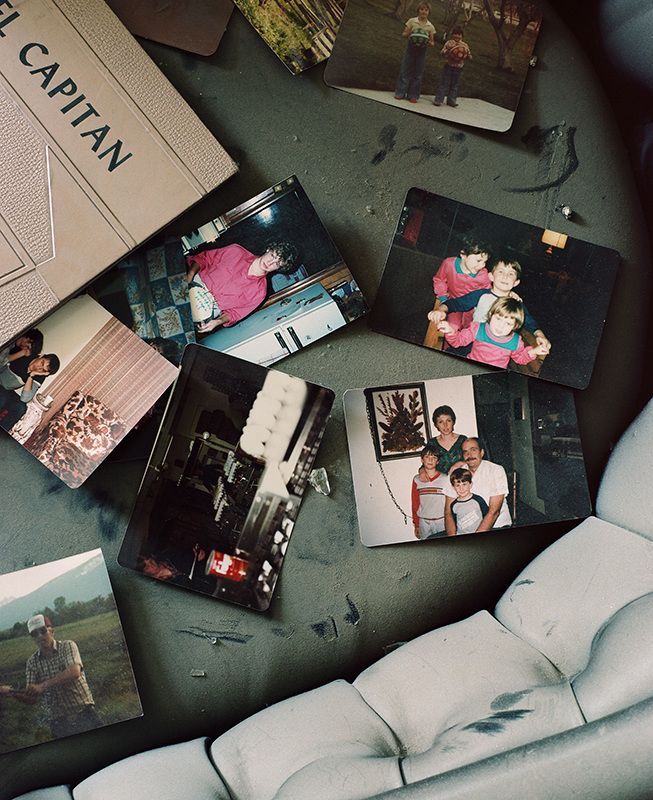
Family photos, from Mining the Past
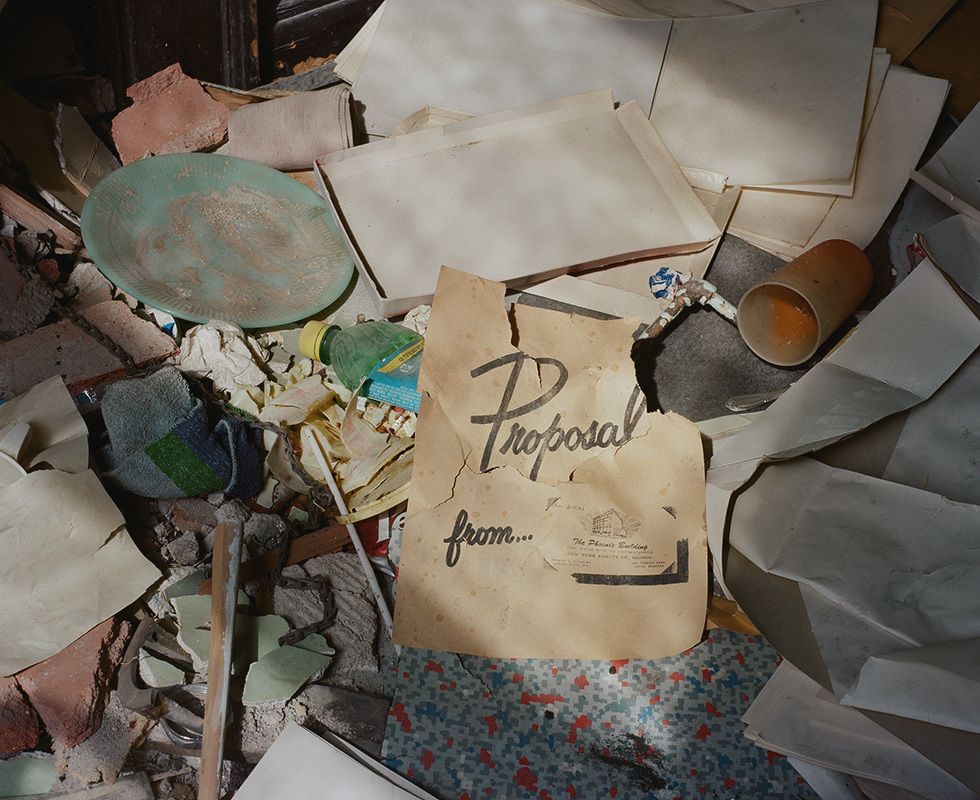
Dinner proposal, from Mining the Past
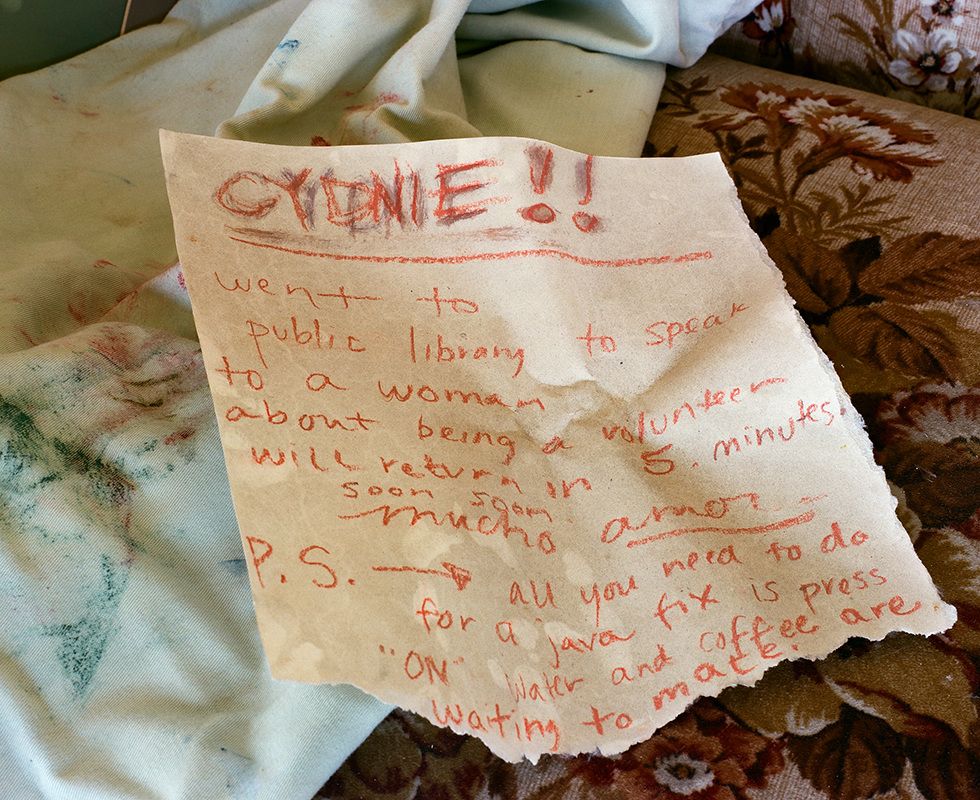
Cyndie, from Mining the Past
CB: Do you keep a journal? do you keep notes or write about the places and people you see? If so, would you share a passage from a particularly meaningful entry?
HJ: I keep a journal of sorts. It is mostly filled with to do lists, place names, some notes on things I want to remember, or quotes I like. Some things I have jotted down on recent travels:
Between the dog and the wolf (dusk)
‘Arrange whatever pieces may come your way’ Virginia Woolf
‘The sand and the bareness’ (description of the land around Butte, from Mary MacLane’s I Await the Devil’s Coming
Witches hole, Haven, Never Sink, Stony Kill, wild and wonderful Lewisburg, Lawrenceburg, Lookout. Soda straws and cave bacon. Getting soft on hotel waffles. The birthplace of country, Hungry Mother, Dry Fork, Greasy Ridge, Dripping Lick Creek, Dark Hollow Falls, Dismal Hollow Road, Dark Horse Lane, Wiseman Branch.
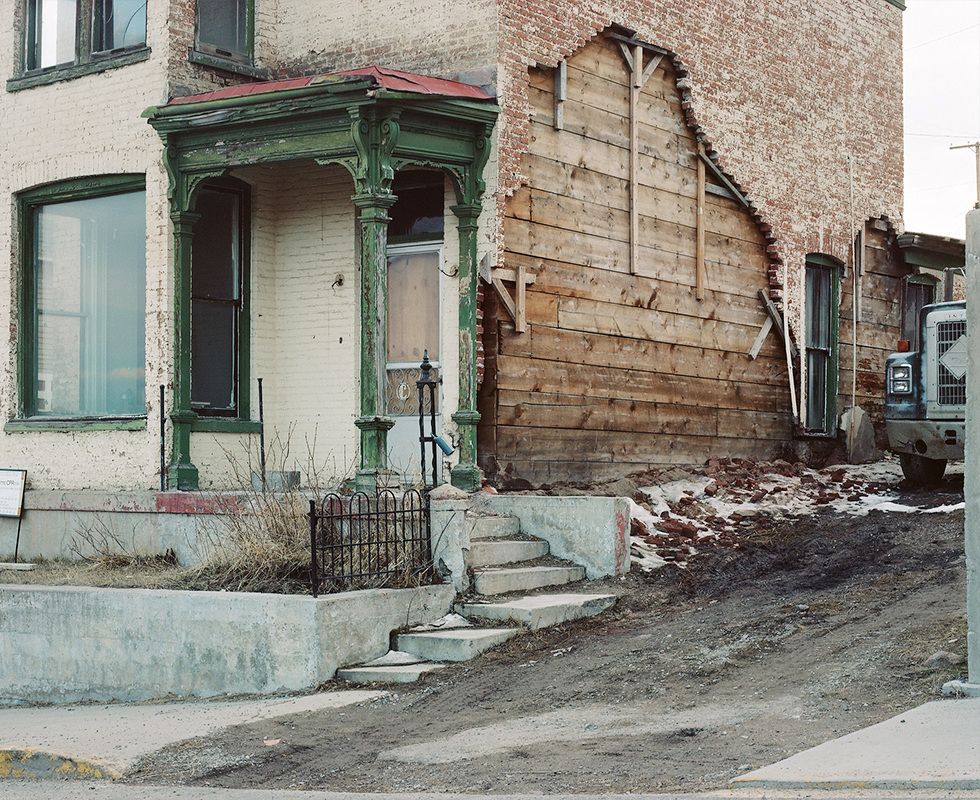
Missing wall, from Mining the Past
CB: What work are you currently working on? Any new projects?
HJ: I’ve been photographing a farmer friend, Pony, and his adventures setting up a sheep farm in southern Oregon. Pony’s story also deals with land use and connection between humans and the land, as well as ideas of rural living, remoteness and community, food and meat production, and the idea of finding a permanent place. I hope to continue working on that project, as well as some work that’s a little closer to home.

Pony’s ponies, from Looking for Land
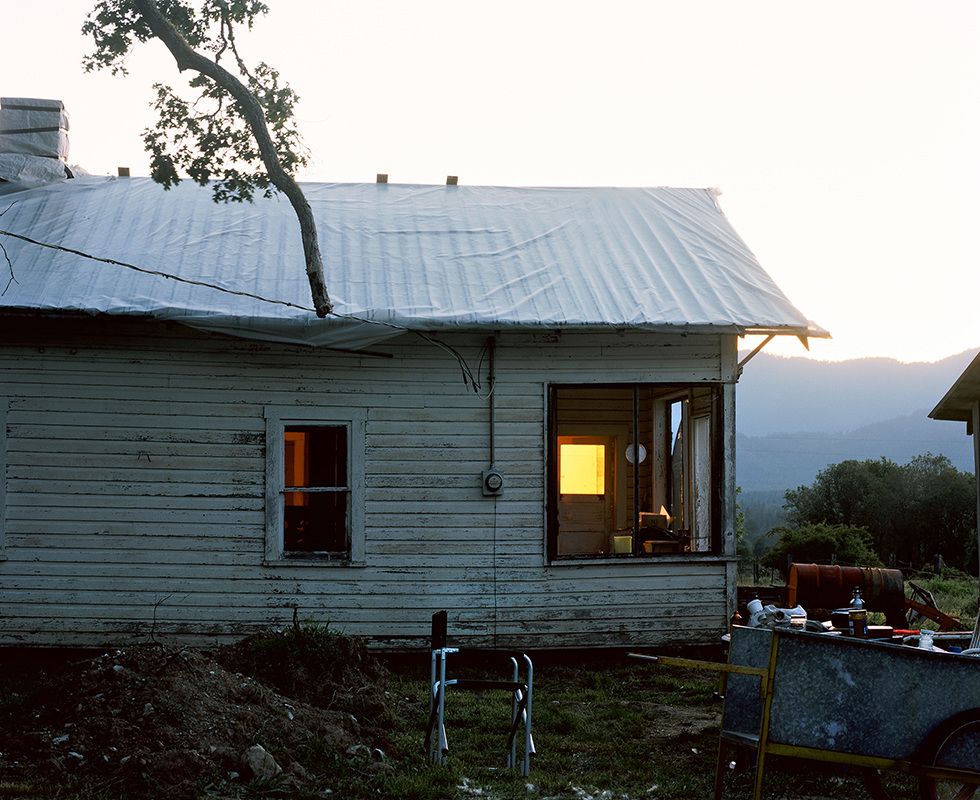
Plastic roof, from Looking for Land
To see more of ‘Mining the Past’ and other projects by Helen Jones, please visit her website at helenjonesphotography.com. Helen Jones graduated from Massachusetts College of Art with a BFA in Photography. Post college she returned to her hometown of Brattleboro, Vermont where she assisted with Through the Music, an eclectic gallery, featuring emerging artists, and co-taught at In-Sight Photography Project, a non-profit that provides photo classes to youth regardless of their ability to pay. Helen now lives in Portland, Oregon. Where she runs Pine Island Press, an extra small press that specializes in publishing photography and art zines. Incandescent, PIP’s primary publication, is a bi-annual international color film zine showcasing emerging photographers. Helen can be found on instagram at @helenjonesphotographs.
Location: Online Type: Interview, Landscapes
Events by Location
Post Categories
Tags
- Abstract
- Alternative process
- Architecture
- Artist Talk
- Biennial
- Black and White
- Book Fair
- Car culture
- Charity
- Childhood
- Children
- Cities
- Collaboration
- Community
- Cyanotype
- Documentary
- Environment
- Event
- Exhibition
- Faith
- Family
- Fashion
- Festival
- Film Review
- Food
- Friendship
- FStop20th
- Gender
- Gun Culture
- Hom
- home
- journal
- Landscapes
- Lecture
- Love
- Masculinity
- Mental Health
- Museums
- Music
- Nature
- Night
- nuclear
- Photomontage
- Plants
- Podcast
- Portraits
- Prairies
- Religion
- River
- Still Life
- Street Photography
- Tourism
- UFO
- Water
- Zine

Leave a Reply